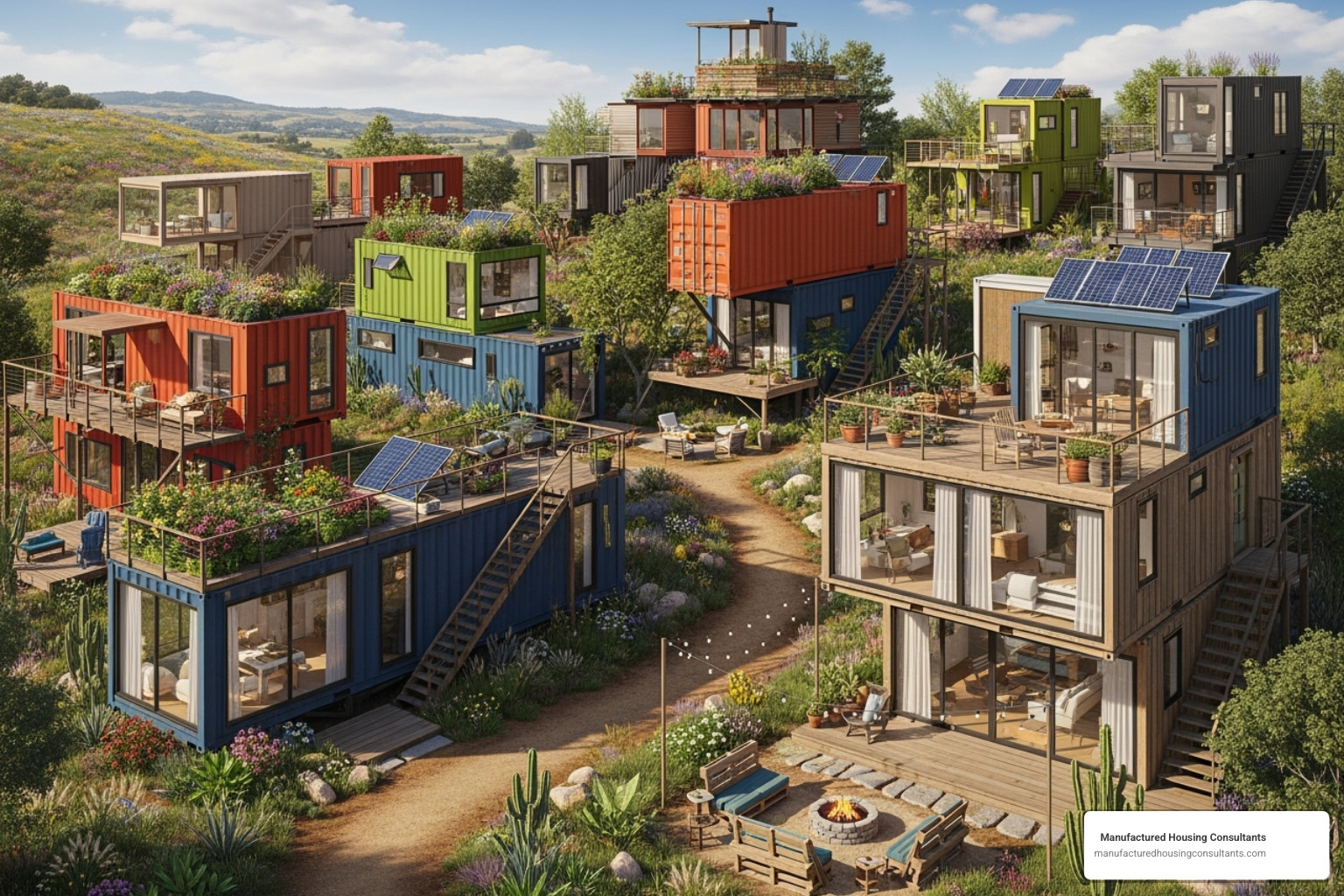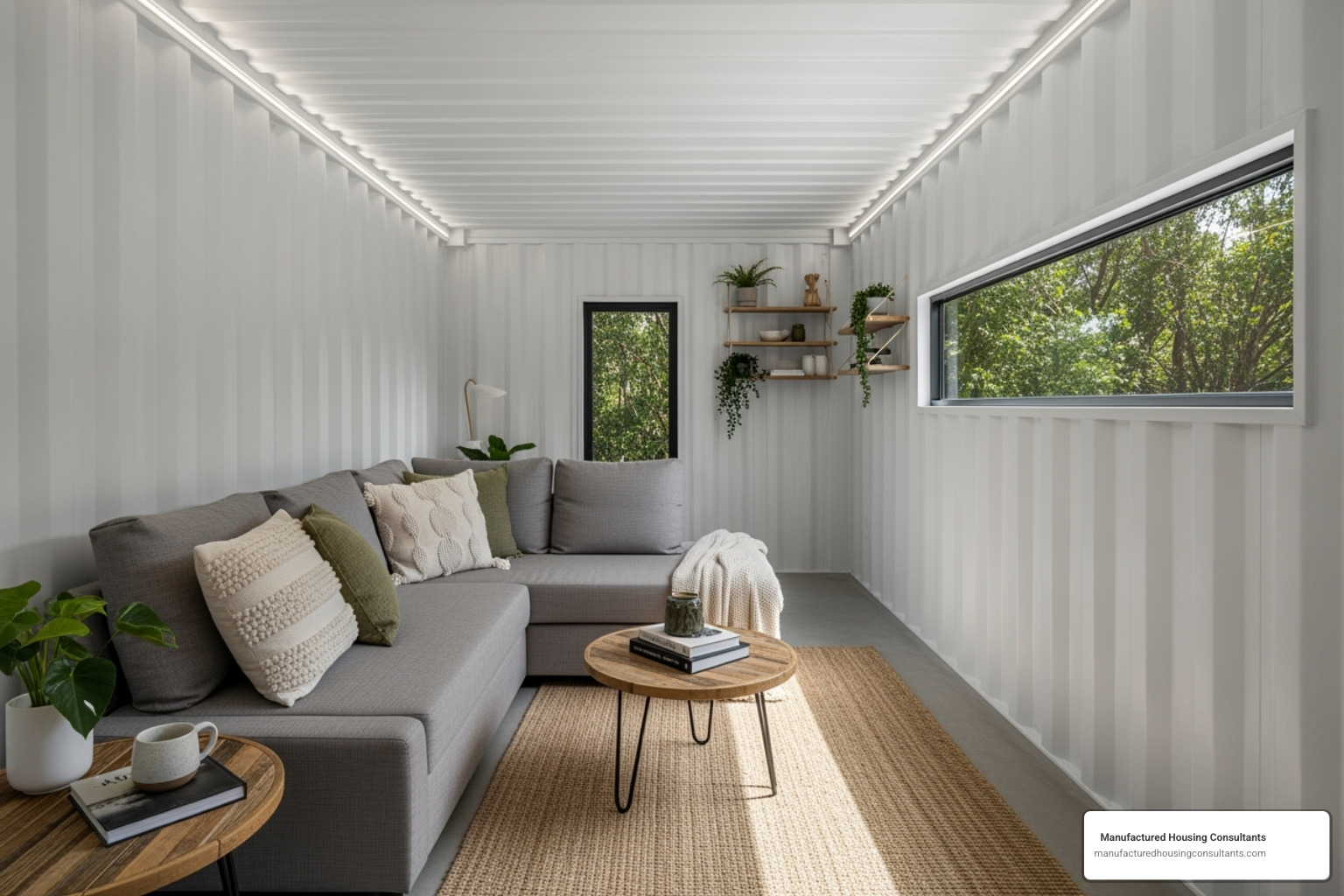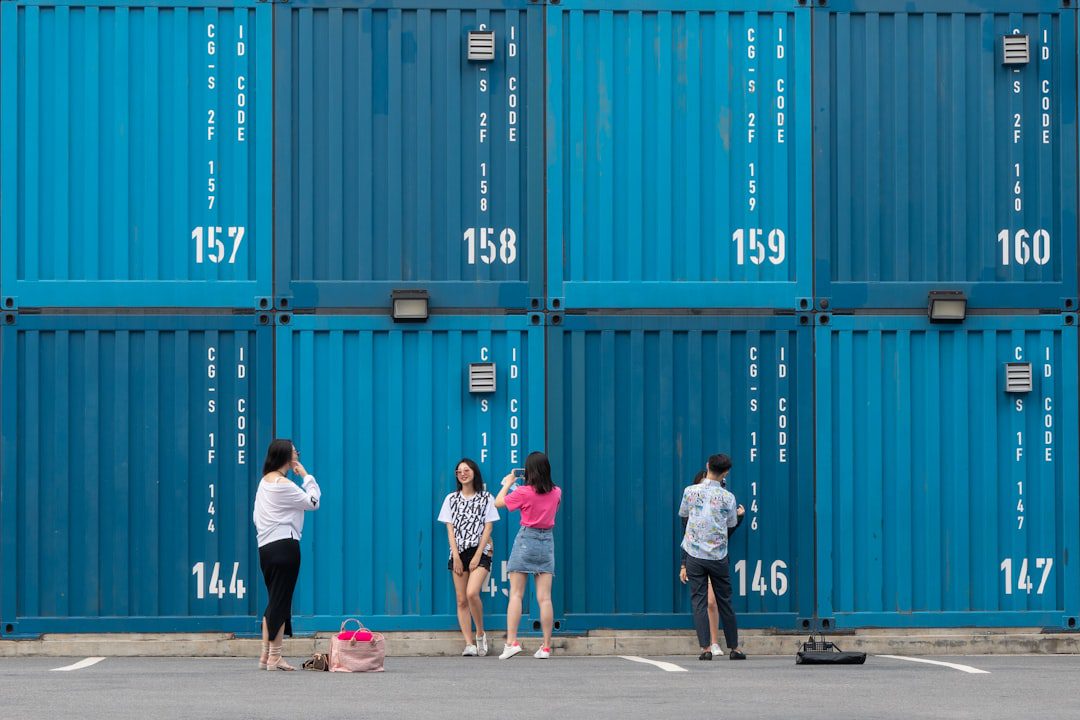The Rise of Shipping Container Homes in Texas
Shipping container tiny homes are revolutionizing affordable housing discussions across Texas, with significant interest in our service areas like San Antonio. These innovative dwellings transform steel cargo containers into functional living spaces, blending sustainability, affordability, and modern design. While this guide explores the topic, please note that shipping container homes are not a product offered by Manufactured Housing Consultants.
What are shipping container tiny homes?
- Small living spaces (160-1,280+ sq ft) built from repurposed shipping containers
- Cost range: $10,000-$250,000+ depending on size and customization
- Standard sizes: 20-foot (160 sq ft) or 40-foot (320 sq ft) containers
- Can be combined for larger homes using multiple containers
Key benefits:
- Durability – Built from 14-gauge steel designed for ocean transport
- Cost-effective – Often 50% less expensive than traditional construction
- Fast build times – Weeks instead of months for completion
- Eco-friendly – Repurposes materials that would otherwise go unused
The trend toward cargotecture—architecture using shipping containers—has gained momentum in Texas as families seek alternatives to expensive traditional housing. The availability of surplus containers makes this an attractive option for budget-conscious buyers.
These compact homes work well in Texas cities like San Antonio, where zoning laws increasingly welcome Accessory Dwelling Units (ADUs). However, success depends on understanding local building codes, ensuring proper insulation for the Texas heat, and working with experienced professionals.
Find more about shipping container tiny homes:
The Ultimate Guide to Shipping Container Tiny Homes in Texas
Here at Manufactured Housing Consultants, we help Texas families find affordable housing solutions across our service areas of San Antonio, New Braunfels, Laredo, Corpus Christi, Victoria, and Von Ormy. While shipping container tiny homes are not a product we offer, we recognize the growing curiosity around them. This guide offers a realistic look at container homes, covering both the exciting possibilities and the challenges you’ll face with Texas heat and regulations, particularly within our service locations.
Key Advantages and Potential Challenges
Shipping container tiny homes are living spaces built inside steel shipping containers. Instead of being scrapped, these sturdy boxes get a second life as homes, offering a sustainable, cost-effective, and unique living solution.
Benefits:
- Durability: Built from heavy-duty steel designed for ocean storms, these containers offer excellent protection against Texas weather, pests, and fire.
- Cost-Effectiveness: With the basic structure already in place, you can potentially save up to 50% compared to traditional construction.
- Speed of Construction: Once permits are approved, a container home can be ready in weeks, not months, avoiding many weather-related delays.
- Eco-Friendly: Repurposing a massive steel structure reduces waste and the need for new building materials.
Challenges (especially in Texas):
- Insulation for Heat: Steel is an excellent heat conductor, making high-quality insulation (like spray foam) essential to combat the Texas summer. This is a significant and necessary expense.
- Permit Complexity: Regulations vary by city and county. Unlike federally regulated manufactured homes, container homes fall into a gray area, making the permit process in places like San Antonio or Corpus Christi potentially difficult.
- Structural Modifications: Cutting windows and doors weakens the container’s integrity, requiring professional engineering and reinforcement.
- Limited Width: The standard 8-foot exterior width (about 7 feet inside) requires creative design to avoid feeling cramped.
For more insights into tiny home living, check out our guide on tiny homes benefits and features.
Understanding Costs and Sizing

The cost of a shipping container tiny home goes beyond the steel box; it includes turning it into a legal, comfortable Texas home. Key factors driving the final cost include the container’s condition (a used one might be $3,000, a “one-trip” container $6,000+), land preparation, foundation work ($10,000-$20,000+), customization level, and professional trades for plumbing, electrical, and HVAC.
Typical Investment Ranges:
- 160 sq. ft. (20-foot container): $15,000-$60,000. Ideal for a backyard office or guest house.
- 320 sq. ft. (40-foot container): $60,000-$120,000. Suitable for a couple or small family.
- Multi-container (640-1,280+ sq. ft.): $120,000-$250,000+. For larger families or luxury designs.
These are estimates, and costs vary across Texas. For a broader perspective on tiny home investments, see our detailed cost guide: How Much Do Tiny Homes Cost?
Navigating Permits and Zoning for Shipping Container Tiny Homes in Texas
Navigating permits is a major hurdle. Unlike manufactured homes with clear federal codes, shipping container tiny homes face a patchwork of local Texas regulations. San Antonio might permit them as Accessory Dwelling Units (ADUs), while other towns may have unclear or restrictive rules.
Your container home must meet the same building codes (structural, electrical, plumbing) as any other house. This makes professional engineering essential, as every cut for a window or door requires reinforcement to maintain structural integrity.
Some builders offer modular certification, where the home is factory-certified and pre-inspected. This can streamline local approvals, similar to how our manufactured homes are processed.
Working with experienced professionals is critical. At Manufactured Housing Consultants, we have steerd Texas housing regulations for years across San Antonio, New Braunfels, and our other service areas. While we specialize in manufactured homes, we understand the regulatory landscape for all alternative housing. Learn more about our expertise in Texas regulations.
Start your permit research early, before buying a container or finalizing a design, to avoid major headaches.
Designing Your Perfect Container Home
Essential Features for Comfortable Texas Living

A container home in Texas must be ready for the state’s extreme weather. From scorching San Antonio summers to coastal humidity in Victoria, designing for the climate is key.
- Insulation: This is non-negotiable. A steel box becomes an oven in summer without proper insulation. Spray foam insulation is the preferred solution, as it provides a high thermal resistance (R-value) and a vapor barrier to prevent condensation. For Texas, you’ll want high R-values; you can find specific recommendations for your climate zone on the ENERGY STAR climate zone map.
- HVAC: A high-efficiency mini-split system is typically the best choice to cool and heat the space effectively without high electricity costs. Good ventilation is also crucial.
- Windows and Doors: Energy-efficient windows and strategic placement for cross-ventilation can make the narrow space feel larger and brighter. Large patio doors opening to a covered deck can expand your living area, perfect for pleasant evenings in Laredo or New Braunfels.
- Layouts and Finishes: Space-saving layouts are essential. Think multi-functional furniture, vertical storage, and compact appliances. Light-colored drywall and durable vinyl plank flooring can make the interior feel open and welcoming, not industrial.
For more inspiration on small-space design, our Tiny House Floor Plans offer clever concepts that apply well to container living.
Customization and Off-Grid Possibilities

Shipping container tiny homes offer nearly endless customization. The strong steel structure allows for creative configurations, from stacking containers to adding rooftop decks with stunning sunset views.
Many Texans are drawn to off-grid living. The state’s abundant sunshine makes solar panels with battery storage a viable option for full energy independence. Other popular features include rainwater harvesting systems, composting toilets to eliminate septic needs, and grey water recycling for irrigation.
Architecturally, you can blend the industrial container look with natural materials like cedar or stucco, or accept the corrugated steel aesthetic. The sustainability benefit is significant: you’re repurposing a massive structure, reducing waste and the demand for new, energy-intensive materials.
Is a Container Home Right for You?
Deciding on a shipping container tiny home requires weighing your lifestyle, budget, and tolerance for regulatory problems.
- Pre-built vs. Custom: Pre-built containers offer speed and predictable costs but limited personalization. Custom builds provide complete design freedom but take more time and management.
- Climate Performance: A well-insulated container home with high-performance windows and an efficient HVAC system can be very energy-efficient, but quality execution is crucial.
- Transportation and Installation: You’ll need specialized equipment, crane access, and a prepared foundation, which can be a challenge on some rural Texas properties.
- Financing: This is a major hurdle. Traditional lenders are often hesitant to finance non-conventional structures like container homes.
This is where our expertise at Manufactured Housing Consultants shines. To be clear, shipping container homes are not a product we build or sell. We specialize in manufactured and mobile homes that deliver similar benefits—affordability, efficiency, and quality—without the financing and permitting uncertainties often found with container projects in our Texas service areas, from San Antonio to Victoria.
Our homes are built to strict federal HUD codes, making them easy to finance and permit across Texas. We offer guaranteed lowest prices and delivery anywhere in the state, including San Antonio, New Braunfels, Laredo, Corpus Christi, Victoria, and Von Ormy.
If you’re drawn to tiny living but want a solution that’s code-compliant, easy to finance, and move-in ready, explore our code-compliant Tiny Homes. Whether you choose a container home or one of our quality manufactured homes, we’re here to help you find the perfect affordable living solution for your Texas dreams.




